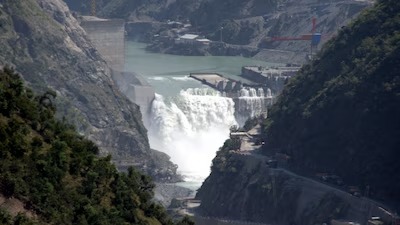Bengaluru: The Indian Space Research Organisation (ISRO), in collaboration with the United States’ NASA, is set to launch the NASA-ISRO Synthetic Aperture Radar (NISAR) satellite today at 5:40 PM IST from the Satish Dhawan Space Centre in Sriharikota, Andhra Pradesh.
NISAR is one of the most advanced Earth observation satellites, marking a decade-long collaboration and over USD 1.5 billion in joint investment between the two space agencies. This high-resolution radar imaging satellite will be launched aboard the GSLV-F16 rocket—marking the first time ISRO is deploying a GSLV to insert a satellite into a sun-synchronous polar orbit, a task typically handled by the PSLV.
Weighing 2,392 kg, the NISAR satellite will orbit the Earth every 97 minutes and provide critical data every 12 days on Earth’s land surfaces, ice sheets, and parts of the ocean. The mission’s expected lifespan is five years.
In a post on X (formerly Twitter), ISRO confirmed, “Launch Day has arrived for GSLV-F16 & NISAR. GSLV-F16 is standing tall on the pad. NISAR is ready. Liftoff today.”
Union Minister of Science and Technology Jitendra Singh hailed the mission as a significant milestone in India’s space diplomacy, describing it as a “scientific handshake with the world.” He emphasized the strategic importance of NISAR in global Earth observation and Indo-US space collaboration.
“This is not just a satellite launch—it symbolizes what two democracies committed to science and global welfare can achieve together,” Singh stated. “NISAR’s data will aid in disaster management, agriculture, climate monitoring, and much more, serving not only India and the US but the entire world.”
NISAR is equipped with a first-of-its-kind dual-frequency Synthetic Aperture Radar (L-band and S-band) using a novel SweepSAR technique, allowing it to capture both high-resolution and wide-swath imagery. It will help monitor natural hazards such as earthquakes, landslides, volcanic eruptions, and tsunamis, as well as assess ecosystem changes and land deformation.
During its initial 90 days in orbit, the satellite will undergo In-Orbit Checkout (IOC) procedures to prepare for full-scale scientific operations.
A defining feature of NISAR is its commitment to open science. All data collected will be made freely available within 24–48 hours of observation, with near real-time access during emergencies. This is expected to empower scientists, researchers, and disaster management authorities worldwide—particularly in developing nations lacking access to advanced Earth monitoring systems.
With its launch, NISAR represents not just technological advancement, but a global commitment to leveraging science for sustainability, resilience, and shared progress.
Trending
- MLAs Unite, Say ‘Legalise Dhirio’
- Oppn Seeks Strict Action Against Food Safety Violators Amid Rising Cancer Concerns
- Pending Laadli Laxmi & Griha Aadhar Applications to Be Cleared Soon: Vishwajit
- Govt to Address Acute Staff Shortage at Cansaulim PHC: Min Vishwajit
- Malegaon Blast Case: All 7 Accused, Including Pragya Thakur and Lt Col Purohit, Acquitted After 17 Years
- Google to Invest $6 Billion in Mega Data Centre in Andhra Pradesh; State Secures Total $7.9 Billion in Tech Deals
- Govt Mulls Ban on Sale of Glass Liquor Bottles Along Coastal Belt
- India Questions Ball Selection Protocol Amid Claims of Preferential Treatment to England








